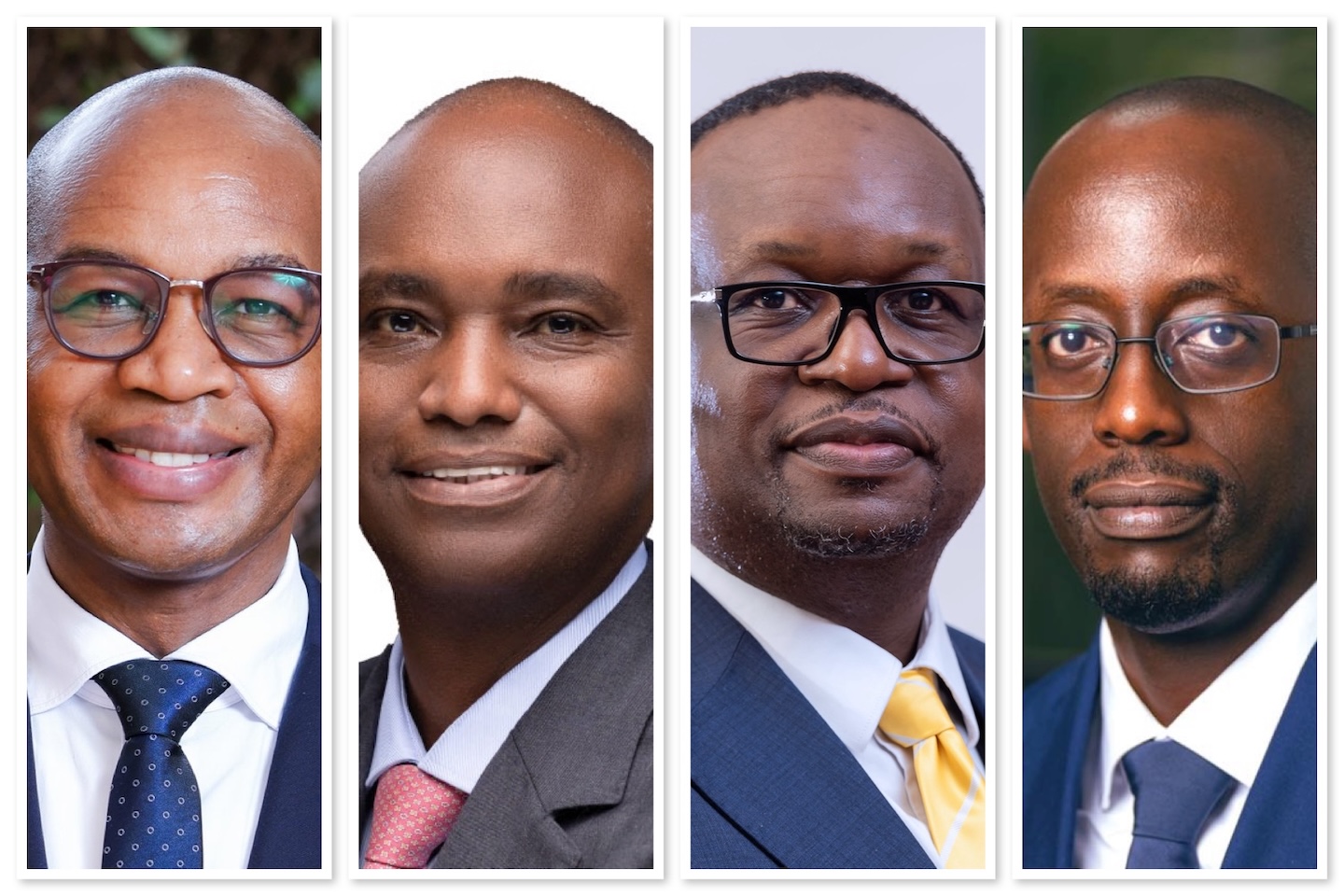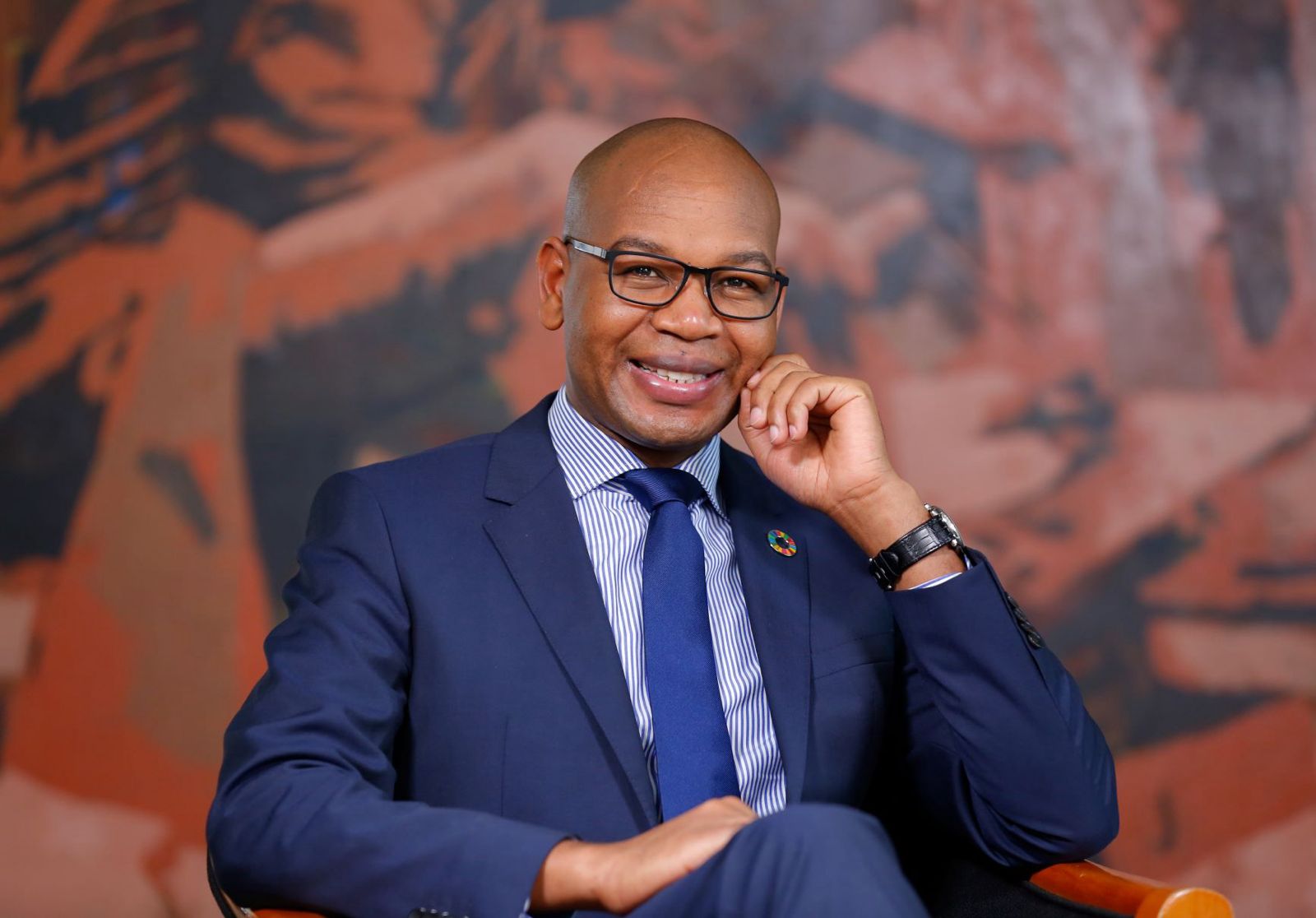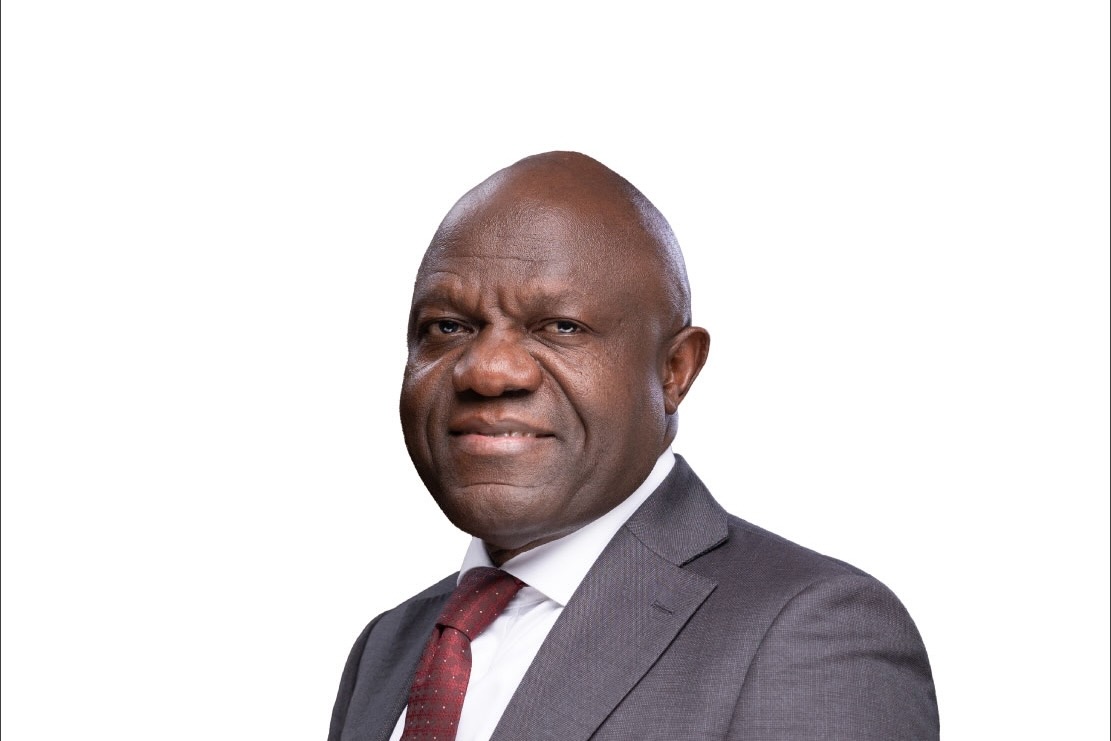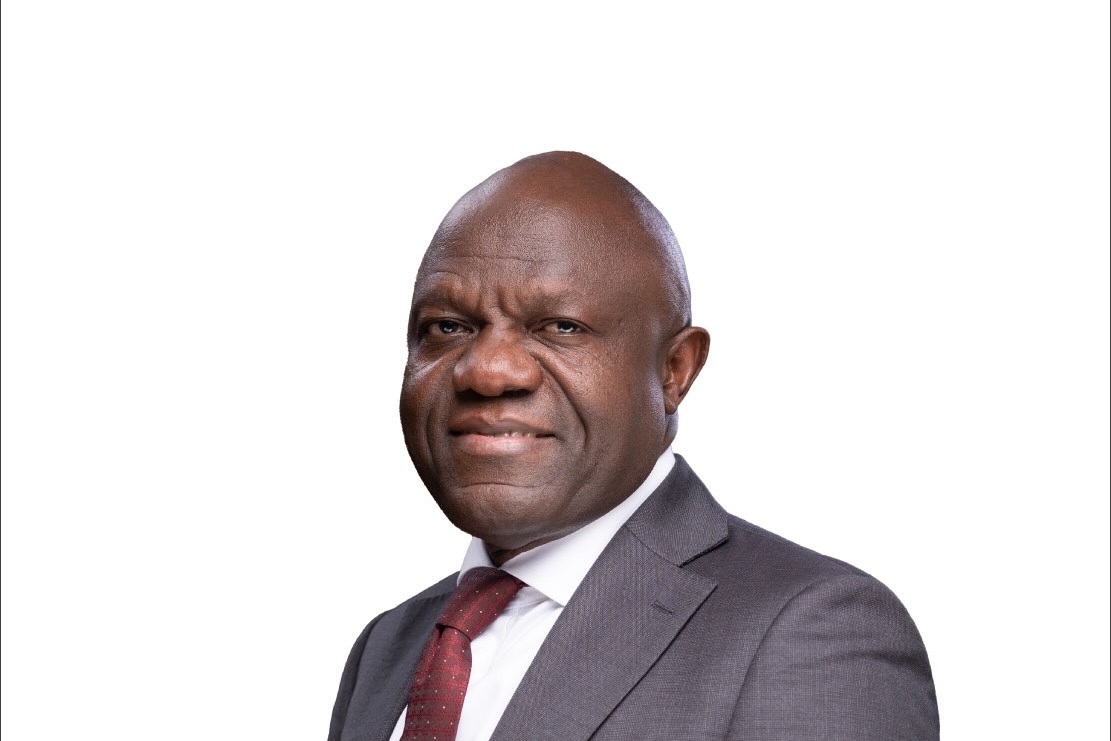Can Joshua Oigara Leverage Standard Bank East Africa’s Strengths to Outpace Rivals?
Effective today, September 1st, Joshua Nyamweya Oigara takes over the helm of Standard Bank’s East Africa operations, becoming Regional Chief Executive for a cluster that includes Stanbic Bank Kenya, Stanbic Bank Uganda, and Stanbic Bank Tanzania.
Standard Bank — headquartered in Johannesburg — is the largest bank on the African continent by assets, with over USD 170 billion in total assets, operations in 20 sub-Saharan markets and offshore hubs, and a reputation for financing Africa’s largest corporate and infrastructure deals.
In East Africa, Stanbic operates across diverse market share zones — from its outright leadership position in Uganda, to a top-three ranking in Tanzania, and a strong top-tier presence in Kenya, as well as presence in Ethiopia, Malawi, and South Sudan. The combined regional portfolio spans billions in customer deposits, loans, and assets across corporate, SME, and retail banking. However, Kenya, Uganda, and Tanzania remain the largest and most influential markets in the cluster. As Oigara takes over, he inherits a business with contrasting performance profiles and divergent growth speeds across these markets.
A Leader with Deep Pan-African Banking Experience
Joshua Nyamweya Oigara steps into his new role with more than 25 years of experience in finance, strategy, and corporate leadership across East Africa’s most competitive banking markets.
Born in Kisii, Kenya, to a family of educators, Oigara earned his Bachelor of Commerce (Accounting) from the University of Nairobi, became a Certified Public Accountant (Kenya) in 1997, and later completed an MBA with Distinction in International Business Management from Edith Cowan University in Australia. His leadership credentials are reinforced by executive programs at INSEAD (France), London Business School (UK), IMD (Switzerland), and Duke University’s Fuqua School of Business (USA) — giving him a rare combination of academic depth and global exposure.
Oigara began his career at PwC Nairobi (1997–2001), building a foundation in audit, consulting, and financial management. He later served as Group Business Performance Manager at Bidco Africa, and Group CFO at Bamburi Cement, a LafargeHolcim subsidiary, where he was instrumental in regional financial integration and operational efficiency programs.
In November 2011, he joined KCB Group as Group CFO and board member. Just 14 months later, in January 2013, at the age of 37, he became Group CEO & Managing Director, making him one of the youngest chief executives of a publicly listed Kenyan bank. Under his nearly decade-long leadership, KCB’s asset base surged past KSh 1 trillion, net profit nearly doubled, regional subsidiaries strengthened, and the bank became a digital banking pioneer.
After stepping down in 2022, Oigara joined Stanbic Bank Kenya as CEO and Executive Director, where he navigated the post-pandemic environment, strengthened corporate banking, and stabilised earnings despite macroeconomic headwinds.
This deep pan-African and cross-sector experience positions Oigara uniquely to lead Standard Bank’s East Africa region — blending a strategist’s eye for market opportunities, a financial operator’s discipline, and a corporate leader’s ability to rally teams around ambitious growth targets.
A Strong Foundation to Build On
Joshua Oigara steps into his new role at the helm of Standard Bank’s East Africa operations with the advantage of inheriting a largely healthy and well-positioned business. Over the past five years, under the stewardship of Patrick Mweheire, the region has achieved significant milestones. Today, the East African portfolio commands assets of about USD 9 billion and, according to sources, is the second most profitable regional bank in the Standard Bank Group, with profit after tax for 2025 estimated between USD 350 million and USD 400 million. It also boasts a cost-to-income ratio of 42% and a return on equity of 26% — both markers of operational efficiency and strong shareholder value creation.

This solid performance has been underpinned by strategic initiatives that have redefined the bank’s role in the region. The roll-out of Borderless Banking has simplified cross-border transactions for clients operating in multiple markets. Stanbic’s participation in financing the multi-billion-dollar East African Crude Oil Pipeline (EACOP) has cemented its position as a leading oil and gas financier. The bank has also broken new ground in regional corporate financing, supporting Uganda’s Crown Beverages in its expansion into Kenya and facilitating Roofings Ltd’s entry into Mombasa — reversing the traditional one-way flow of Kenyan businesses expanding into Uganda. These moves have demonstrated Stanbic’s ability to catalyse regional trade and investment in both directions.
The bank’s human capital is another pillar of strength. Oigara inherits a workforce of more than 4,500 employees, a team rich in expertise across corporate, SME, retail, and specialist banking. This talent pool is complemented by a strong leadership bench. Patrick Mweheire remains within the fold as Chief Executive of Stanbic Holdings Kenya, ensuring continuity in a key market. In Uganda, Mumba Kalifungwa continues to lead with a proven track record of driving growth and transformation, while in Tanzania, Manzi Rwegasira brings deep market knowledge and operational acumen to the role.
With capital strength, a diversified market presence, and a seasoned leadership team, Oigara is not starting from scratch. He steps into a franchise with momentum, credibility, and a robust operational platform, giving him the opportunity to accelerate growth, defend market leadership, and extend Stanbic’s influence in one of the most dynamic and competitive banking regions on the continent.
Yet, even with this strong platform of assets, profitability, leadership depth, and operational momentum, Oigara inherits a portfolio that faces a new set of headwinds. Market conditions are shifting, competition is intensifying from both established giants and nimble mid-tier players, and the three largest markets in the cluster — Kenya, Uganda, and Tanzania — are moving at very different speeds. The task ahead is not just to preserve what has been built, but to navigate these challenges while finding fresh engines of growth.
Kenya: Home Base Under Profit Pressure
In Kenya, Stanbic remains a respected top-tier player, but 2025 has underscored just how challenging the operating environment has become. In the first half of the year, Stanbic Holdings Plc reported a KShs 6.5 billion profit after tax, down 9% from the same period in 2024. The flagship banking unit, Stanbic Bank Kenya, fared similarly, posting KShs 6.4 billion, a 10% drop year-on-year.
The profit decline came despite healthy growth in fee and commission income, as net interest margins were squeezed by aggressive interest rate cuts and weaker forex trading spreads. Corporate and investment banking — traditionally Stanbic’s stronghold in Kenya — has faced intensified competition, with larger rivals matching its capabilities and agile mid-tier banks aggressively targeting trade finance, treasury, and SME banking.
At the same time, operating expenses rose, reflecting investments in talent, technology, and compliance amid inflationary cost pressures. While Stanbic Kenya retains a loyal corporate base and continues to grow its wealth and SME propositions, the challenge for Joshua Oigara will be to restore earnings momentum in a market where pricing power is shrinking, competition is intensifying, and regulatory scrutiny is tightening.
Uganda: Profitable Giant, Slowing Core Growth
In Uganda, Stanbic is the undisputed market leader — commanding 20.2% of all commercial bank deposits and 19.4% of sector assets as of 2024 — and it continues to set the pace in profitability. The bank closed 2024 with a record UGX 486.8 billion in net profit, and in the first half of 2025, it posted UGX 278.4 billion, an 18.2% year-on-year increase.
This performance was driven by:
- Total income rising to UGX 685.2 billion (+7.5% YoY)
- Non-interest income growing to UGX 313.7 billion (+14.0%), now 45.8% of total revenue
- Credit losses halve to UGX 7.3 billion (-49.2% YoY)
- Return on equity (ROE) improved to 26.9%
- Cost-to-income ratio improving to 47.1% from 47.8%
Yet the growth engine is cooling. From 2020–2024, deposits grew at 6.6% CAGR, loans at 4.9%, and assets at 4.8% — slower than rivals like Centenary Bank (loans +17.4% CAGR) and Absa Uganda (+7.8% deposit CAGR). Mid-tier players, such as Housing Finance Bank and PostBank, are expanding significantly faster, particularly in the retail and SME segments.
For Joshua Oigara, Uganda offers the profit engine of the region, but one that risks losing its growth edge unless he can inject new momentum in deposit mobilisation, lending volumes, and market share expansion — all while defending the strong margins and asset quality that have made Stanbic Uganda a benchmark in the industry.
Tanzania: Profit Surge, Liquidity Strength
In Tanzania, Stanbic delivered one of its strongest performances in recent years, with profit after tax surging 44.6% to TZS 128.0 billion in 2024. This leap was supported by double-digit growth in deposits, a stronger non-interest income base, and improved cost efficiency.
Key highlights include:
- Total assets: TZS 3.06 trillion (+16.7% YoY)
- Customer deposits: TZS 2.05 trillion (+19.1% YoY)
- Loans and advances: TZS 1.43 trillion (+2.3% YoY)
- Non-interest income: TZS 144.7 billion (+27.3% YoY), driven by FX gains of TZS 102.3 billion and fee income of TZS 41.7 billion
- Cost-to-income ratio: 42.6%, down from 47.1% in 2023
- Return on equity (ROE): 26.7%
Notably, the loan-to-deposit ratio improved from 80.6% to 68.7%, signalling a much stronger liquidity position. Interbank placements nearly doubled to TZS 792.9 billion, showing strategic use of excess funds while maintaining a conservative lending posture.
While profitability and liquidity are at multi-year highs, the relatively slow loan growth points to an opportunity for Joshua Oigara to deploy this strong liquidity into higher-yield lending — particularly in trade finance, infrastructure, and targeted SME segments — to balance the deposit expansion with sustained credit growth.
The Competitive Squeeze
Across East Africa, Stanbic is facing intensifying competition from both established giants and fast-moving challengers — a squeeze coming from all sides of the market.
At the top end, regional heavyweights such as KCB Group, Equity Bank, and Centenary Bank are matching or surpassing Stanbic’s growth rates in key markets. KCB and Equity, in particular, are leveraging deep balance sheets, aggressive regional expansion strategies, and heavy investment in digital platforms to win corporate, SME, and retail customers across borders.
At the other end, mid-tier banks — including Housing Finance Bank, PostBank, DTB, and NCBA — are no longer content to operate in niche corners of the market. They are rapidly scaling through agency banking, mobile-led onboarding, micro-SME lending, and sector-focused products in areas like agribusiness, affordable housing, and women-led enterprises.
In Uganda, Centenary Bank has been closing the gap in loans and deposits, while Absa Uganda has reinvented itself with double-digit growth in key segments. PostBank and Housing Finance Bank have been expanding at a breakneck pace, often outgrowing Stanbic in annual deposit and loan growth percentages.
In Kenya, mid-sized players have moved into traditionally corporate-dominated spaces such as trade finance, treasury solutions, and regional supply chain funding. This has put pressure on Stanbic’s long-standing corporate franchise, forcing it to defend market share with sharper pricing and more integrated solutions.
In Tanzania, well-capitalised local and regional banks are targeting Stanbic’s customer base with competitive foreign exchange rates, faster credit turnaround times, and branch-plus-digital hybrid service models tailored for SMEs.
For Joshua Oigara, this means Stanbic can no longer rely solely on its scale and reputation. Defending leadership will require greater agility, faster innovation, and more targeted market segmentation — all while protecting the profitability that has been a hallmark of the brand.

Opportunities: Scale, Diversification, Oil & Gas
While competition across East Africa is heating up, Joshua Oigara inherits a portfolio with formidable advantages — anchored in Standard Bank Group’s scale, capital strength, and continental footprint. With over USD 170 billion in assets and operations spanning 20 African markets and offshore hubs, Standard Bank can underwrite deals and structure financing that smaller rivals cannot match.
This muscle opens several strategic growth avenues:
- Uganda’s Oil & Gas Boom: The country’s oil and gas sector — driven by the USD 10 billion East African Crude Oil Pipeline (EACOP) and upstream developments in the Albertine Graben — represents the most significant financing opportunity in the region this decade. Stanbic Uganda already has a strong track record in the sector, financing local content and supporting supply chain businesses. With group backing, Oigara can position Stanbic as the go-to banker for multinational oil companies and hundreds of SMEs in the sector, offering everything from supplier credit to infrastructure financing.
- Cross-Market Corporate Synergies: Many of Stanbic’s largest clients operate in multiple East African markets. By integrating regional trade finance, treasury, and liquidity management solutions, the bank can strengthen corporate relationships, reduce client churn, and capture a greater share of cross-border business flows.
- Non-Interest Income Expansion: Uganda’s nearly 46% share of income from non-interest revenue and Tanzania’s surging FX and fee income prove that diversification works. Scaling bancassurance, asset management, and digital transaction banking across all three markets could buffer the business against margin compression from interest rate changes.
- Digital & SME Banking Leadership: Rivals have made inroads into SME lending through digital platforms, but Stanbic’s capital strength, customer base, and data capabilities give it the ability to leapfrog competitors with AI-driven credit scoring, digital onboarding, and supply chain finance solutions tailored to SMEs, agribusinesses, and women-led enterprises.
- Liquidity Deployment in Tanzania: With its loan-to-deposit ratio down to 68.7% and interbank placements almost doubling, Stanbic Tanzania has the liquidity headroom to fund high-yield lending in trade, infrastructure, and corporate sectors — boosting both income and market share.
For Oigara, the real prize is in translating scale into speed — leveraging Standard Bank’s size and credibility to win big-ticket deals like EACOP while simultaneously capturing fast-growth retail and SME segments through digital innovation.
From Scale to Speed
Oigara’s mandate is clear: shift Stanbic’s East Africa play from scale to speed. Uganda’s profitability is unmatched, but its growth pace must accelerate. Kenya needs to recover its margins and sharpen its competitive positioning. Tanzania has momentum but must deepen loan book growth to match deposit inflows.
If Oigara can harmonise performance across these markets, leverage Standard Bank’s scale for big-ticket sectors like oil & gas, and inject digital-driven agility into Stanbic’s DNA, the group could not only defend its leadership but redefine it.
Suppose he cannot, Stanbic risks becoming a profitable but maturing giant, outpaced by faster, hungrier rivals. The next chapter will test whether Joshua Oigara can turn Africa’s biggest bank into East Africa’s fastest-growing.
Share this content:

 Uganda’s ‘Father’ of Modern Advertising: David Case’s Four-Decade Creative Odyssey
Uganda’s ‘Father’ of Modern Advertising: David Case’s Four-Decade Creative Odyssey



Post Comment